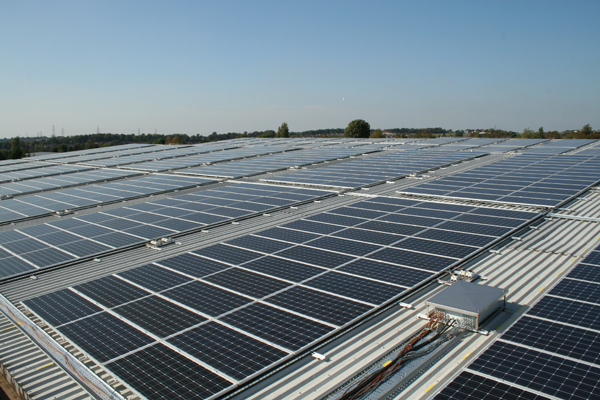
[Image above] Raise the roof for competitively priced renewable energy: Solar costs substantially less than it did in recent years, say Berkeley Lab researchers. Credit: h080; Flickr; CC BY-SA 2.0
Everything seems to be more expensive these days.
I mean—have you bought meat lately? I’m about to become a vegetarian if for no other reason than the price of chicken and beef.
One thing that isn’t more expensive, however, is the price of solar energy in the United States.
According to a news release, two reports—Utility Scale Solar and Tracking the Sun—from the Lawrence Berkeley National Laboratory show that solar costs substantially less than it did in recent years, partly because large-scale solar projects (such as Ivanpah) have found ways to offer renewable energy that’s competitively priced.
“The price of electricity sold to utilities under long term contracts from large-scale solar power projects has fallen by more than 70% since 2008, to just $50/MWh on average within a sample of contracts signed in 2013 or 2014 and concentrated among projects located in the southwestern United States,” says Berkeley’s Mark Bolinger, one of the authors of Utility Scale Solar.
It also costs less to install a utility-scale photovoltaic (PV) project, say the authors. Utility-scale projects have shown increased performance while decreasing in price by a third since 2007–2009.
Likewise, in 2013, the cost of installing a residential or commercial PV system fell by almost $0.70 per watt—or 12% to 15%—from the previous year, according to the writers of Tracking the Sun.
“This marked the fourth consecutive year of significant price reductions for residential and commercial systems in the U.S.,” says co-author Galen Barbose.
Unlike previous years, during which the falling price of PV modules helped reduce the installation cost, it is reductions in solar’s “soft costs”—marketing, system design, installation labor, and permitting and inspections—that seem to be the driver of the decline in PV system pricing.
Those soft costs are detailed in a third report, How Much Do Local Regulations Matter?, written by the lab in collaboration with the University of Texas at Austin and the Department of Energy. The data show that variances in permitting and regulatory procedures in different cities “significantly impact” the price (to the tune of $900, or $0.18/W) of residential PV systems.
Says Berkeley’s Ryan Wiser, co-author of the report, “A variety of efforts are underway to make local procedures less onerous, and more conducive to solar market growth. These results highlight the magnitude of PV price reductions that might be possible through streamlining burdensome local regulatory procedures.”
Those efforts include the DOE’s Rooftop Solar Challenge, which is providing funding to state and local governments to reduce “administrative barriers” to PV, and Vote Solar’s Project Permit, which scores cities based on their PV-permitting requirements.
To read the reports in full, or download fact sheets and presentation files, click here.
